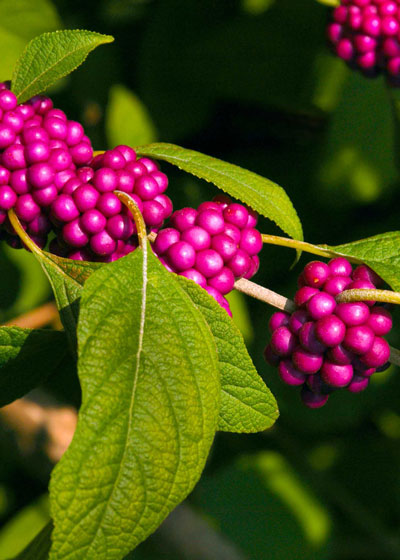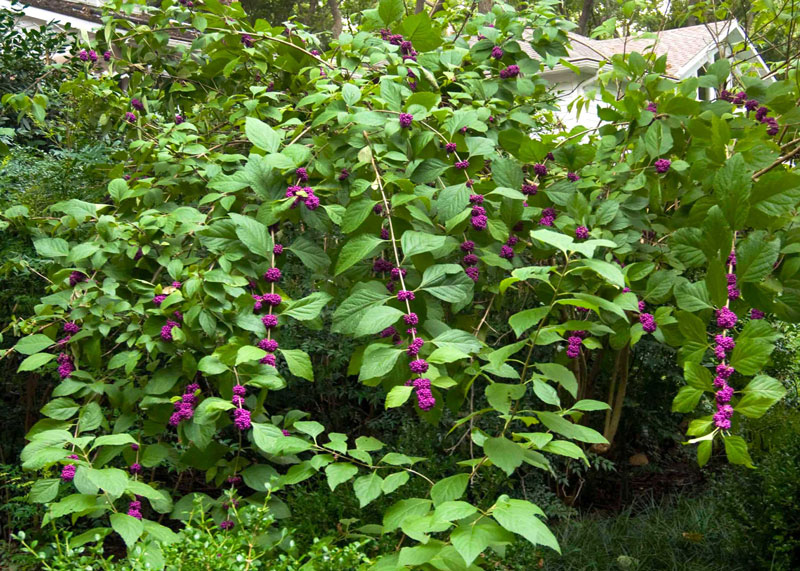Here’s you a pretty Native Texan
We all strive to feature our native plants when we’re developing our landscapes. That’s fairly easy when it comes to picking shade trees, but it’s more challenging when we have to settle on shrubs. Most of the types that grow in one part of the state aren’t perfectly suited to the soils or the climate in another.
To a degree I guess that could be said about American beautyberry (Callicarpa americana), too, but it’s easy to modify the soil and planting site so that most of us can grow it. It’s a stunning plant native to South Central Texas and adapted to much of the rest of the state as long as moist, highly organic soils and a shady location can be provided.
This is an unusual shrub. It acts more like a tall-growing perennial. It has large leaves and bold stems, so it doesn’t branch as heavily as most other shrubs. Therefore, it’s harder to train it into formal shapes. You just let it grow freeform to 4 to 6 ft. tall and wide.
Beautyberries are deciduous. That means that any pruning and shaping is best done in winter while it’s less noticeable. That way the new growth of spring will fill in and give you a lovely shrub with vigorous new shoots.
No plant with such showy fruit has less conspicuous flowers. You’ll notice them, but most likely you won’t think anything of them. As summer progresses, however, you may notice the clusters of fruit developing along the stems.
Suddenly in early fall, the fruit develops into jewel-like globes of iridescent rich purple. And, almost unique to the plant world, these fruit are borne in masses that encircle the stems on regular distances. They’re absolutely glorious, and they’re visible from great distances within the garden.

Are there any downsides to such a lovely shrub? Most would worry first about insects and diseases, but I’ve seen none of those. But there are two things that crossed my mind:
• American beautyberries were born to wilt. They will be your indicator plants of when it’s time to turn on the sprinklers. They will wilt first. That’s especially true if they hang out into the sun. This is not a huge problem. It’s just there, and it can get a bit frustrating.
• American beautyberries proved to be just a little bit more sensitive to cold than I had expected. The Missouri Botanical Gardens lists it as hardy to Zones 6-12. That includes Missouri, and it certainly includes all of Texas. However, that blast that hit Texas in February 2021 killed 4 of my 5 American beautyberry plants. I’d been growing them for 30 years without problems, so I’ll chalk that up to a really bad weather experience.
You may encounter a pearly white form of American beautyberry. Admire the nursery for offering it, but don’t buy more than one. Most of us who have planted it have regretted the decision. It’s a novelty that soon grows boring. The real joy comes from the old-fashioned purple fruit borne by the hundreds.
Spring is the best time to plant this great native shrub because that’s the time the nurseries have it. But fall is the best time to observe it in the woods and gardens of Texas.

